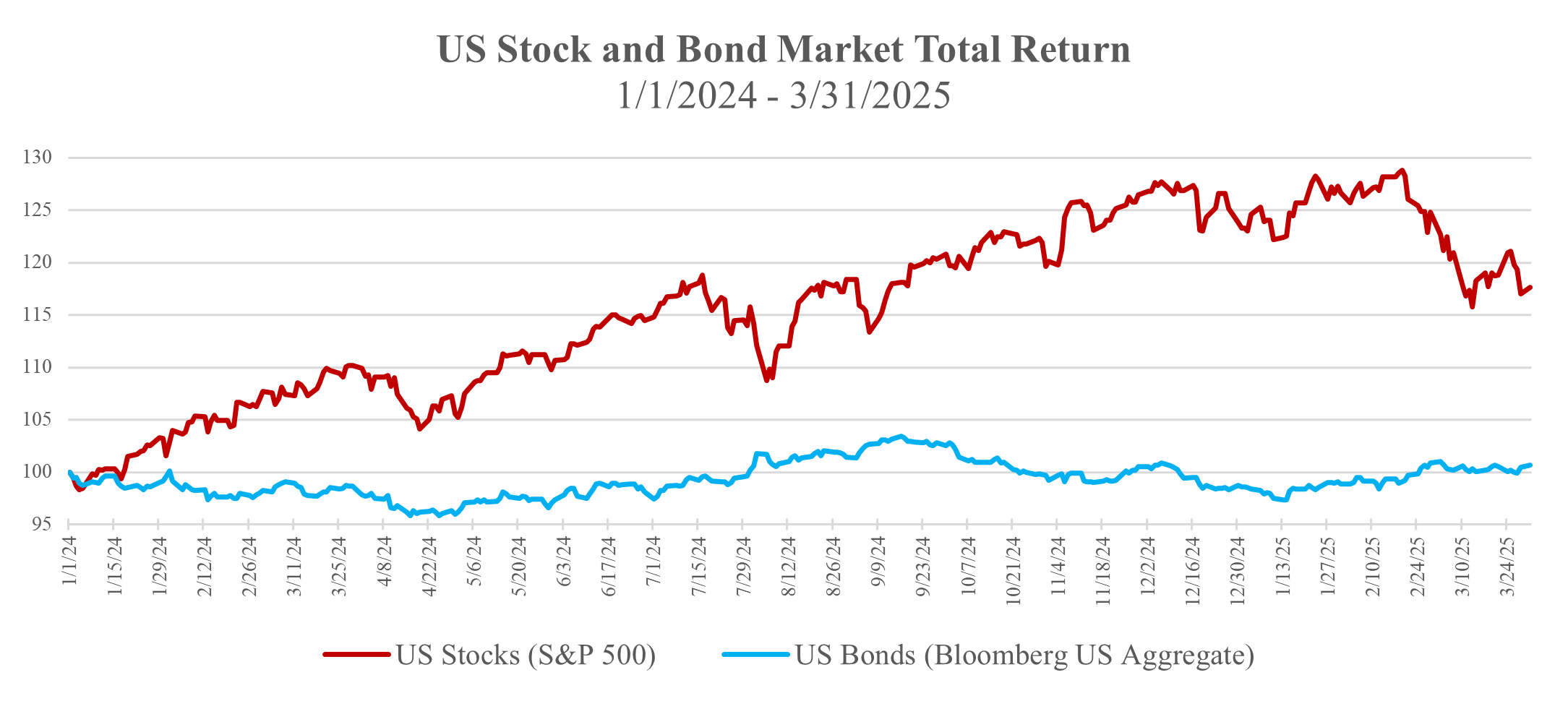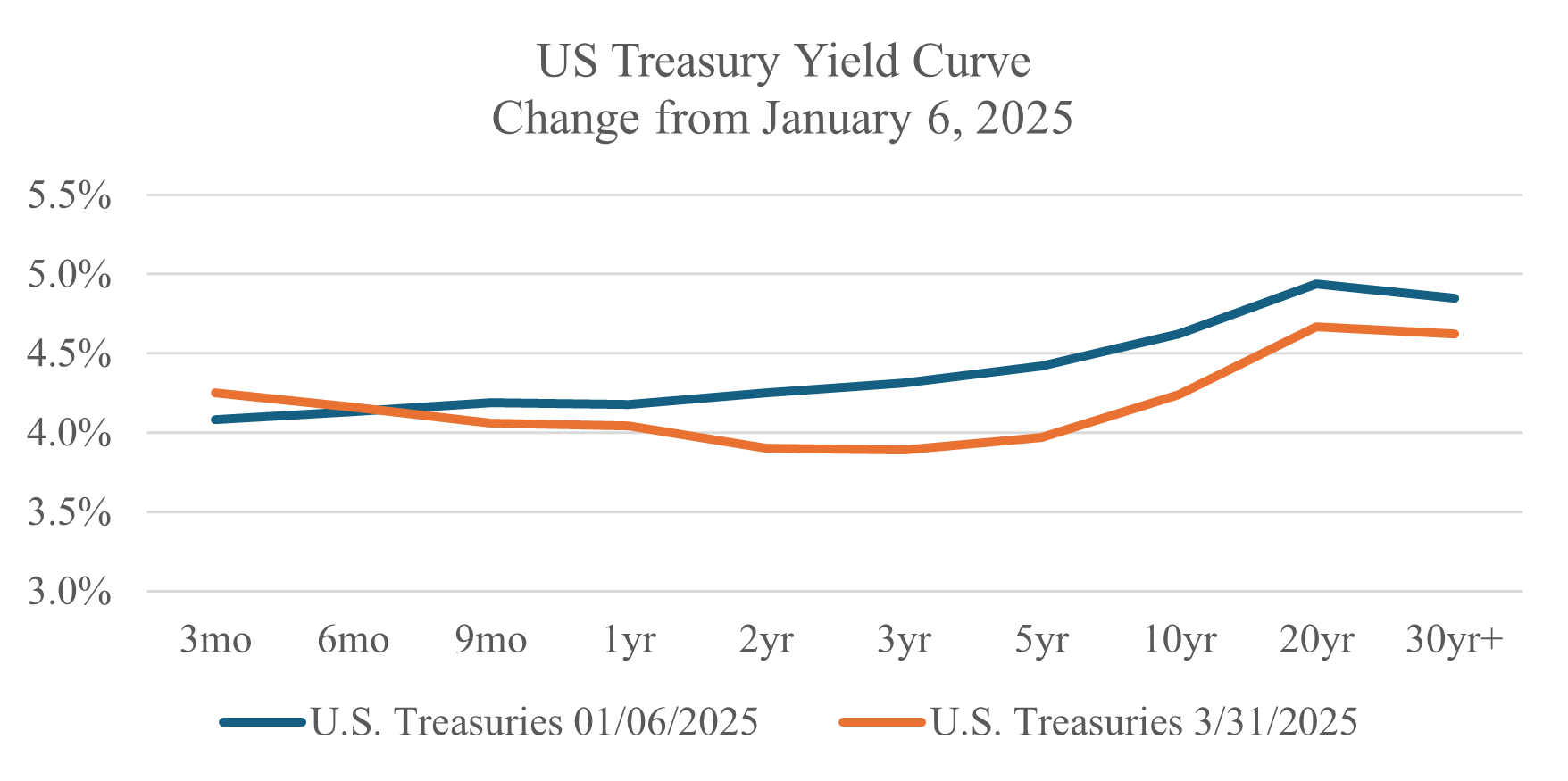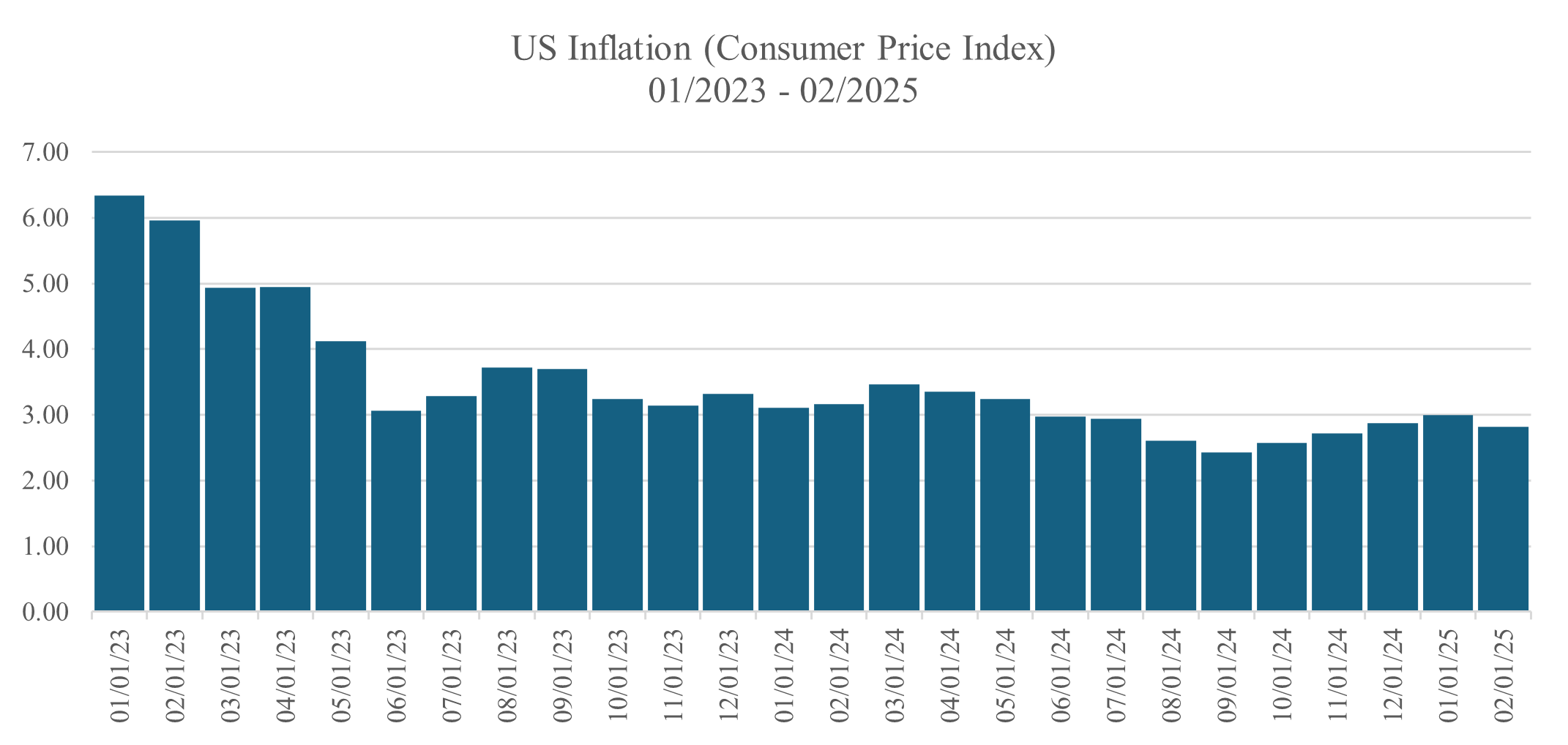A Reset in the Market

Source: FactSet Research Systems, Archer Bay Capital LLC
The last six weeks have been tough for the stock market, with the S&P 500 falling by 9.1% since its peak on February 19th and retreating by 4.6% since the beginning of the year.
As we often discuss, stock prices are about 90% correlated with earnings and earnings expectations have weakened as well. For the stocks in the S&P 500, growth expectations have pulled back to 10.6%, down from 14% at the beginning of the year, so the decline in stocks is not a surprise.
Contributing factors have been uncertainty around tariffs and their effect on the global supply chain, weakness in the some of the largest technology stocks, and a drop in consumer confidence.
On the bright side, bond returns have been positive, with the Bloomberg US Aggregate Index gaining 2.1% since the beginning of the year.
Earnings Season Should be Illuminating
Is earnings growth of 10.6% a reasonable expectation for 2025? To answer this, we looked at the breakdown in the eleven sectors that make up the S&P 500 index.

As we have reviewed before, the sector breakdown within the S&P 500 is not equally distributed, so we have included the weighting by market capitalization in the first column.
Technology is the largest sector and has the second highest earnings growth expectations at an 18% increase. Healthcare has the highest overall earnings growth expectation at 18.5%. No sector is expected to have declining earnings at this time.
Healthcare and Consumer Discretionary companies are expected to be impacted by government spending cuts but this hasn’t shown up in earnings expectations yet. We would expect further stock market declines in the near term if earnings expectations are revised down.
We will be closely watching first-quarter earnings reports, which start during the second week of April. That is when we will get updated guidance from the companies on their growth expectations for the rest of the year.
US Treasury Bonds
On the bond side, most yields have come down slightly since the beginning of the year. When yields decline, existing bond values go up, which is why bond market performance has been positive.

Source: Fidelity Investments; Archer Bay Capital LLC
Economists are predicting the economy to slow down due to less government spending. Bond yields frequently fall when economic growth slows. The wild card is what will happen to inflation.

Source: FactSet Research Systems; US Bureau of Labor Statistics; Archer Bay Capital LLC
The March inflation figures will be released on April 10th, so that will be the next important data point. If inflation begins increasing again, it could put pressure on the Federal Reserve to hold current interest rates steady or possibly consider raising them again, even if the economy is slowing. If inflation falls, the Fed may resume lowering interest rates, which could help stimulate the economy and provide a buffer to any headwinds.
The next several months will be informative in terms of both positive and negative changes in corporate profits, interest rates, and inflation. While we wait for the data, we do expect the markets to continue to be choppy.



